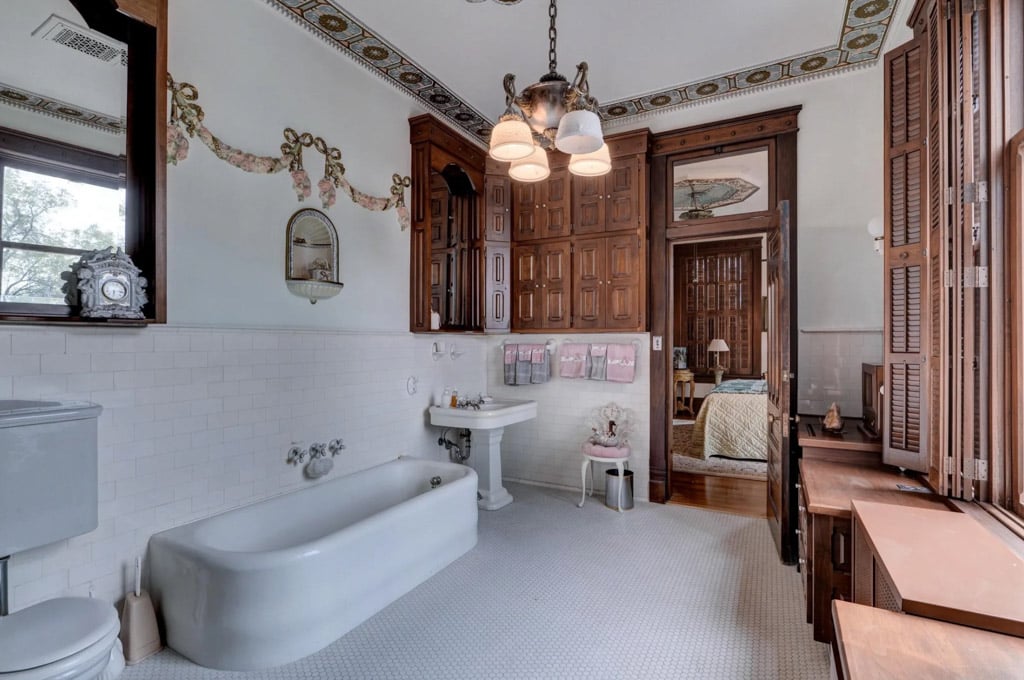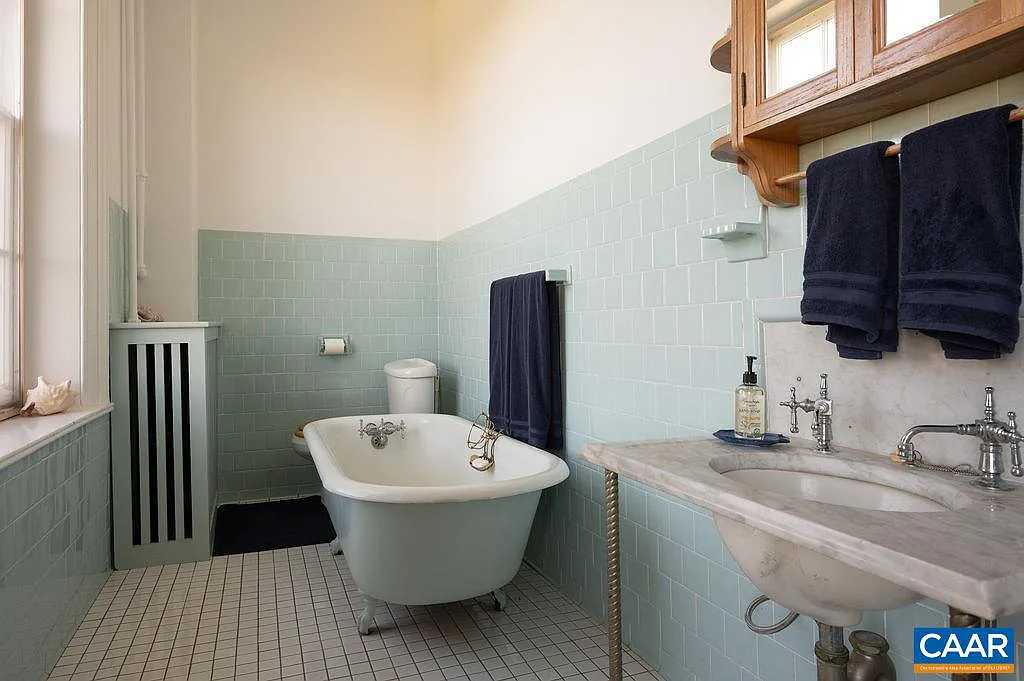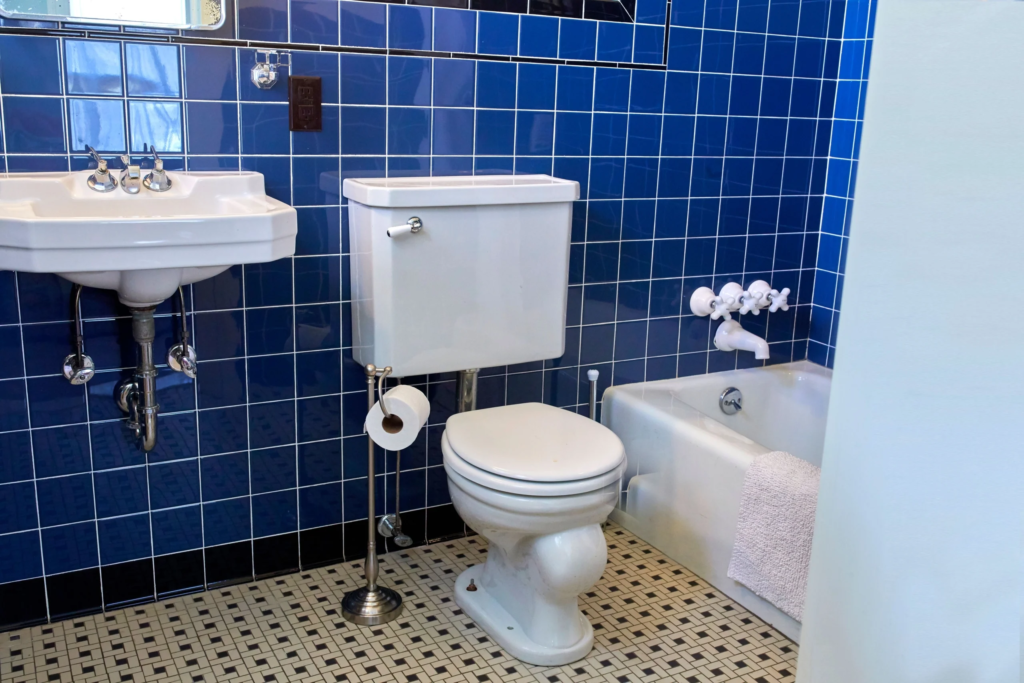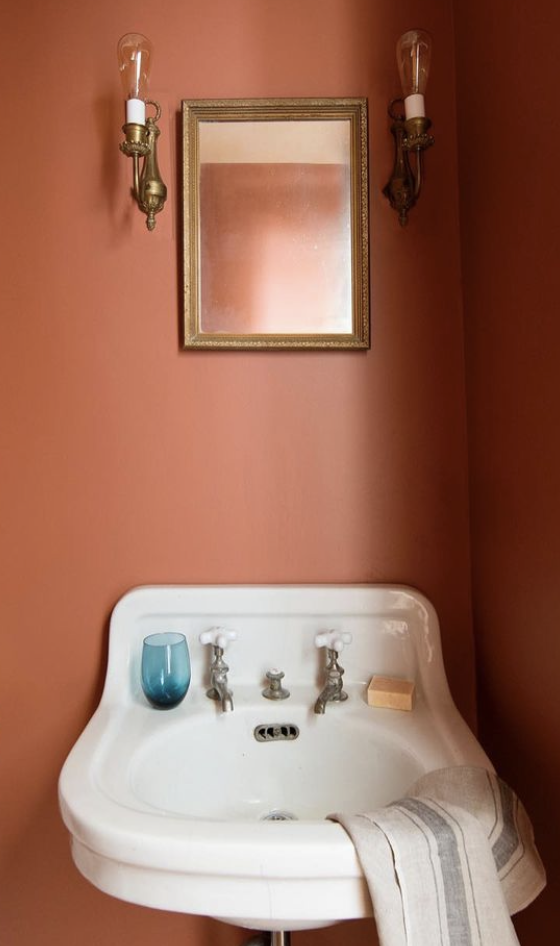



A bathroom with original features is a beautiful thing to behold. Though, judging by the stock in your favorite architectural salvage warehouse, not everyone agrees. Alas! The next best thing to finding an intact historic bathroom is reconstructing one using vintage tubs, sinks and even tile and taps. Early in my rehab journey, I was warned against using salvage toilets, and I still haven’t tried it. (Have you? I’d love to know!)
Let’s be clear. I’m not advocating against contemporary-style bathrooms in historic houses. Bathrooms and kitchens are two areas where, I believe, houses can and should be allowed to evolve – even in lucky cases where original fixtures and cabinetry have survived, accommodations must usually be made. As long as the design and workmanship are well done, there is room for the 21st century to show itself.
How to get started
If the goal is to create a period-appropriate bathroom, here’s some advice about getting started:
- Determine your starting point. Do original fixtures and other features (tile, towel bars, etc.) still exist, or are you starting from scratch? Will you keep the plumbing where it is, or are you moving things around? Simply replacing fixtures is certainly less expensive than relocating drains and supply lines, but the rough-ins for vintage fixtures often don’t match modern ones. So, if you’re replacing everything anyway, sometimes it’s worth taking the opportunity to work from a blank slate.
- Draw a floor plan. Bathrooms require certain dimensions and clearances for both convenience and code. I use the Kitchen & Bath Planning Guidelines – NKBA. Many communities require building permits for plumbing renovations. Make sure you understand your local process before getting excited about fixtures and finishes!

In this complete bathroom makeover, we kept the plumbing in place, but replaced the toilet (brand new Sunrise Specialty from Vintage Tub & Bath) and sink (vintage pedestal from Zaborski Emporium with new bridge faucet from Vintage Tub & Bath). The floor is a custom design (that our tiler figured out, bless him) from American Restoration Tile. We love the variegated color and crackle finish of the new tile wainscot. Sconces and medicine cabinet are also from Zaborski Emporium.

This bathroom was created where no bathroom existed before, using fixtures scavenged from other parts of the house (returning it from multi- to single-family use). The blue-and-black DalTile, with zippy white grout, pays homage to mid-century bathroom design. The floor’s classic spiral tile pattern is still easy to find. The porcelain faucet and taps are from Vintage Tub & Bath.
What do I need in the bathroom?
Inventory the items you need. A partial list for one bathroom includes toilet, sink(s), tub or shower (or combo), faucet kits for tub/shower and sink(s), lighting, and accessories (towel bars, hooks, TP holder, soap and shampoo shelves). You’ll need advice from a plumber or vendor on drains, valves and supply lines that are compatible with your selected fixtures. Also note that many vintage lights require a smaller junction box (to house the wiring inside the wall behind the fixture), so make sure to communicate with your electrician when sourcing. They aren’t historic, but ventilation fans are a must. Importantly, make sure there’s an adequate heat source – perhaps a cast-iron radiator (salvage places are full of these) or radiant in-floor heat. This isn’t just about personal comfort. Frozen pipes are a real thing! Plumbing is especially vulnerable when placed on an outside wall, so keep this in mind when designing your layout (see above).

The plumber had a devil of a time finding supply lines to fit the original taps of this vintage sink (from Zaborski Emporium). Wonderful photographer Em McCann Zauder was able to magically erase the blocks we had to put behind the sconces (from Fed-On Lights Antiques) because they needed smaller J-boxes (lesson learned).
And on that cautionary note, let’s take a “bathroom break” and continue in the next post, Part 2!
Find these sources and more in CIRCA’s directory of Trusted Pros.

AUTHOR KATE WOOD grew up criss-crossing the country in the family’s Volkswagen Bus, visiting house museums, battlefields, Main Streets, and national parks. Today, she is an award-winning preservationist, real estate broker and principal of the full-service historic rehabilitation consulting firm, Worth Preserving. Kate believes in the essential value of old-building stewardship to sustain community character. For her, each property is a cause and each client a fellow advocate. She specializes in matching people with properties, skilled contractors, historic tax credits and other benefits to support top-tier rehabilitation projects.




